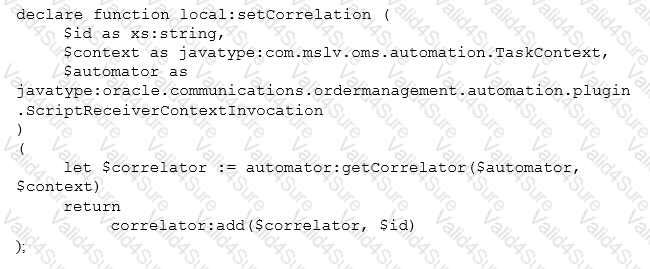1z0-493 Exam Dumps - Oracle Communications Order and Service Management Server 7 Implementation Essentials
OSM receives customer orders that request mobile lines and that contain three order items: one represents the mobile service, the second represents the mobile terminal, and the last represents the mobile SIM card. These order items have no reference between each other and must be provisioned independently on the network, such that they are decomposed to generate three provisioning functions. Which analyzing the provisioning system, you realize that provisioning of the SIM card order item must use some information available in the mobile service order item.
How would you provide the mobile service order item information to the function that is provisioning the SIM card order item?
What is the possible reason for calling the following XQuery function from an automation?
 );
);
OSM is executing an order with the process indicated in the diagram. Immediately after the completion of TaskD, a revision is received, which causes only TaskB to be re-evaluated. During the re-execution of TaskB, a significant data element used by TaskA and TaskD is updated in the order. Which task is re-evaluated when the compensation for TaskB completes?

Due to internal errors in a downstream system, one of the automated tasks is receiving an error response to a request sent from OSM. Considering that the error is an issue that could be resolved by simply retrying the request, identify the functionality you would use to recover from this fallout scenario.
When sending customer orders from a CRM application, a customer sales representative (CSR) reports that order requests are returning an error: “No matching Order Recognition rule found.†After analyzing the error, you decide that a catch-all recognition rule should be configured, so that these orders are still created in OSM. Which three actions would you take to configure your new catch-all recognition rule?